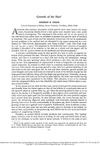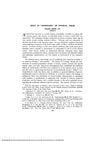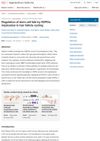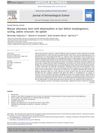TLDR Hair growth is influenced by factors like genetics and nutrition, and more research is needed to understand hair loss and growth mechanisms.
In the 1978 review, Malkinson and Keane examined the dynamics of hair matrix cell division, noting the rapid division rate of human anagen hair matrix cells and the influence of various factors such as genetics, age, sex, disease, malnutrition, and environmental conditions on hair growth. They highlighted the lack of direct studies on hair matrix cell kinetics at the time and the reliance on indirect measures to infer changes. The review summarized that cell cycle times and growth rates are affected by factors like hair papilla size and nutrient availability, and discussed the cell division cycle phases. The complexity of hair matrix cell kinetics was emphasized, along with the need for more research to understand hair growth and loss mechanisms. Additionally, the review covered the dose-dependent impact of radiation on matrix cells, with higher doses causing more severe damage, and the temporary effects of chemotherapeutic drugs on hair matrix cells, contrasting with the more permanent effects of high-dose radiation. It also mentioned the "escape" phenomenon in hair damage with ongoing cytotoxic agent administration and the additive effects when drugs and radiation are combined. The review suggested that once cell replication begins, there are no significant differences in cell kinetics between stimulated and spontaneously dividing cells, although this may not apply to all in vivo observations.
30 citations
,
February 1977 in “Nature” The dermal papilla can still grow new hair even after heavy radiation.
38 citations
,
August 1973 in “Journal of Investigative Dermatology” 28 citations
,
March 1973 in “The Journal of Clinical Endocrinology & Metabolism” Altered DHEA metabolism in hair follicles may be linked to hair loss in balding men.
22 citations
,
April 1972 in “Journal of Steroid Biochemistry” Beard hair follicles convert testosterone to 5α-dihydrotestosterone most intensively.
31 citations
,
October 1971 in “Steroids” Human beard hair follicles change testosterone into other related hormones, but don't much change androstenedione into testosterone.
46 citations
,
April 1971 in “American Journal of Clinical Nutrition” Lack of protein causes hair root damage, but it can be reversed by eating protein again.
 47 citations
,
July 1967 in “Science”
47 citations
,
July 1967 in “Science” Not eating enough protein can cause hair roots to shrink and lose color, and hair to become thinner.
 521 citations
,
January 1954 in “Physiological Reviews”
521 citations
,
January 1954 in “Physiological Reviews” Hair growth is cyclic and influenced mainly by local factors.
 114 citations
,
December 1951 in “Archives of Dermatology”
114 citations
,
December 1951 in “Archives of Dermatology” Aminopterin strongly suppresses epithelial tissues and can treat certain skin conditions but has significant side effects.
 4 citations
,
January 2014 in “The Scientific World Journal”
4 citations
,
January 2014 in “The Scientific World Journal” Red deer antler extract helps hair grow by extending the growth phase and increasing cell growth in hair follicles.
 3 citations
,
December 2022 in “npj Regenerative Medicine”
3 citations
,
December 2022 in “npj Regenerative Medicine” HSPGs help control stem cell behavior, affecting hair growth and offering a target for hair loss treatments.
December 2023 in “Animals” The study mapped yak skin cells to understand hair growth better.
 25 citations
,
April 2021 in “The EMBO Journal”
25 citations
,
April 2021 in “The EMBO Journal” Hair follicle stem cells help maintain skin health and could improve skin replacement therapies.
 52 citations
,
October 2012 in “Journal of Dermatological Science”
52 citations
,
October 2012 in “Journal of Dermatological Science” The document concludes that mouse models are crucial for studying hair biology and that all mutant mice may have hair growth abnormalities that require detailed analysis to identify.








